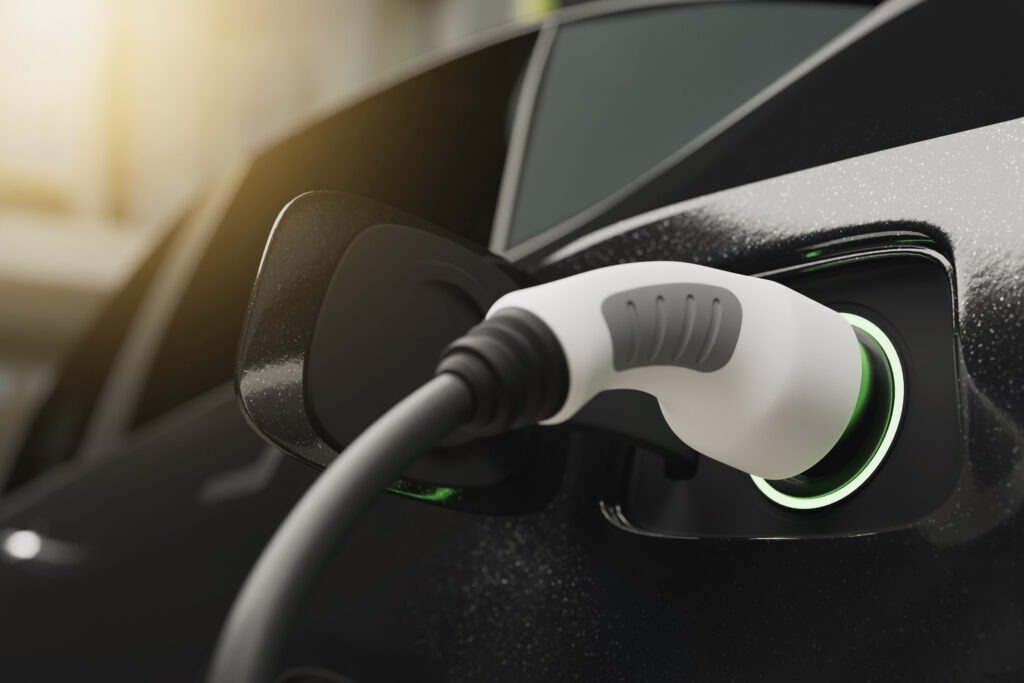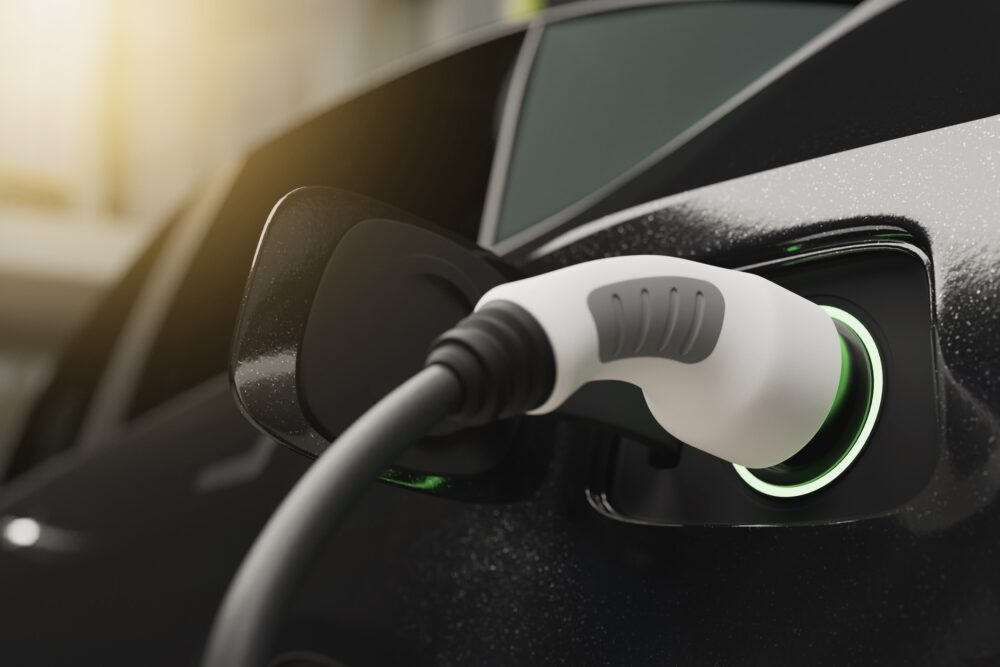16 October 2025

As plug-in hybrid (PHEV) deliveries continue to soar, Tesla is quietly running away with Europe’s best-selling battery-electric vehicle (BEV) title. But is it too late for domestic rivals to catch up? Tom Hooker, Autovista24 journalist, analyses the data from EV Volumes.
The latest data from EV Volumes shows that the European PHEV market grew by 53.9% year on year in August. This equated to 82,308 new units featuring the technology hitting the roads.
This was an improvement on July’s result, which itself was the best volume improvement since June 2021. The result marked a sixth month of consecutive double-digit improvement, highlighting the powertrain’s growing appeal.
Meanwhile, 158,225 battery-electric vehicles (BEVs) were registered in the month. This equated to a 24.6% jump in sales, as its streak of double-digit increases extended. All-electric model deliveries have seen volume growth every month so far in 2025.
These unwavering performances meant BEVs saw a larger cumulative improvement than PHEVs between January and July. Yet, August proved to be a turning point. PHEV volumes rose by 28.3% in the first eight months of the year, with 789,268 units. Meanwhile, BEVs managed a 25.8% increase. However, it retained the greater volume, with 1,544,223 deliveries in the period.
Combining the two powertrains, electric vehicle (EV) deliveries soared by 33.3% in August, to 240,533 units. In the first eight months of the year, 2,333,491 new EVs took to European roads, marking a 26.7% increase.
BEVs continued to make up the majority of EV deliveries, but their grip loosened slightly compared to one year prior. The technology accounted for 65.8% of overall EV deliveries in August, down 4.6 percentage points (pp) compared to August 2024. The smaller drop occurred in the cumulative figures, with its share dropping from 66.6% to 66.2%.
Tesla extends lead
This year has been a rollercoaster for the Tesla Model Y. Looking at Europe’s BEV best-sellers table, the crossover has either finished first or ninth since February.
This can be partially explained by its quarterly delivery cycle. The model’s two highest volume months came in March and June. However, at the start of the following quarter, the BEV dropped down the table. It then gained momentum again in the following month. The Model Y continued this trend by topping the table in August, after a disappointing July.
The crossover recorded 8,451 sales to take its fifth win of the year, 2,191 units ahead of its nearest competitor. However, it was not all good news for Tesla’s leading model. Its volumes dropped by 37.3% compared to one year prior. In turn, its market share halved compared with August 2024, down to 5.3%.
Skoda Elroq remains popular
July’s best-selling BEV, the Skoda Elroq, secured second in its 10th month of sales. The model’s 6,260 delivery total translated to a 4% market share. After entering the top 10 for the first time in April, it has only placed in the first three positions.
Behind was the Tesla Model 3, making its fourth top-three appearance in 2025. Its deliveries rose by 9.9% to 6,177 units. The sedan captured 3.9% of BEV volumes, down 0.5pp year on year. The US model has also had a rollercoaster ride across the first eight months of 2025. It has only placed in the top 10 on four occasions.
Volkswagen’s (VW) ID.3 finished fourth, with 5,554 units, up 58.8% compared to August 2024. The hatchback has maintained consistent deliveries throughout 2025, with monthly volumes ranging between 5,399 units and 6,932 units. However, its positions have been mixed.
BMW’s good form continues
After enjoying a year-best result of fourth in July, the BMW iX1 continued to prove a popular choice, placing fifth in August. The SUV recorded 4,966 sales, up 33% compared with 12 months ago. The model saw its share grow from 2.9% to 3.1%.
In the shadow of its younger sibling, the Skoda Enyaq took sixth. It sat just 15 units behind the BMW iX1 with 4,951 deliveries. This represented a decline of 20.4% year on year and was its lowest volume month of 2025 so far. Its share subsequently fell by 1.8pp to 3.1%.
Conversely, the VW ID.4 in seventh saw deliveries grow by 18.3%. However, its 4,786-unit total was also the crossover’s lowest monthly volume of 2025. Due to increased competition, its market share also dropped by 0.2pp to 3%.
In eighth place, with a combined total of 4,678 units, was the Renault 5 and Alpine A290. This equated to a market share of 3%. The Kia EV3 placed ninth, with 4,253 units in its 11th month on the market. The model accounted for 2.7% of overall BEV volumes. Apart from June, it has featured in every monthly top 10 table so far this year.
The VW ID.7 took 10th, its lowest finishing position across the first eight months of 2025. It also recorded its lowest monthly delivery figure of the year, with 4,131 units. Yet, this was still a considerable improvement from 12 months prior, equating to a 46.6% uptick in sales. The ID.7 made up 2.6% of the market, up 0.4pp.
Can Tesla hold on?
After its victory in August, the Tesla Model Y extended its lead in the yearly chart. It looks set to become Europe’s best-selling BEV this year.
The crossover has seen 83,194 deliveries across the first eight months of the year. A gap of 32,569 units now separates it from its nearest competitor, as it claims a market share of 5.4%. It seems highly unlikely that the Tesla Model Y could be caught by the end of the year.
The model’s closest rivals have struggled to cross the 10,000-unit threshold in any month this year. The only other BEV to achieve this feat is the Tesla Model 3.
In the Model Y’s lowest volume month in April, it still managed 4,568 deliveries. If the crossover were to replicate this result until December, its competitors would still need a significant increase in volumes to mount a challenge.
Seven-way BEV battle
The battle for second remains hotly contested, with 8,320 units separating the runner-up spot from 10th place. The VW ID.4 held second, with 50,625 deliveries and a 3.3 % market share.
Its sibling, the ID.3, sat just 682 units behind. It moved up one place from July’s cumulative standings, with 49,943 sales. The hatchback, as well as the next four positions, all held a 3.2% share of BEV volumes at the end of August.
The Skoda Enyaq remained in fourth with 49,748 units, while the combined total of the Renault 5 and Alpine A290 fell two spots to fifth with 49,554 deliveries.
The Tesla Model 3 moved up from seventh in July, recording 49,524 deliveries across the first eight months of 2025. This is a promising move ahead of another quarterly-reporting period.
Another BEV that made ground was the Skoda Elroq. Thanks to another strong month, the SUV moved up one place, posting 48,678 units. This came at the expense of the VW ID.7, after a disappointing August. Its total of 47,693 deliveries translated to a 3.1% market share.
The Kia EV3 came ninth, accounting for 2.9% of overall BEV volumes with 44,560 sales. The BMW iX1 closed out the top 10, posting 42,305 deliveries and a 2.7% share.
Three in a row for VW
In Europe’s PHEV market, the VW Tiguan has now recorded three monthly victories in a row. This follows its first ascent to the top in June. August, however, was its most emphatic victory.
The SUV’s 4,010-unit total represented a 275.5% year on year increase. Its share also soared from a 2% share to 4.9%.
The Tiguan led its nearest competitor, the Volvo XC60, by 667 deliveries. The second-place SUV achieved a 27.7% improvement in volumes during August, with 3,343 units. However, as the PHEV market has become even more crowded, the XC60 saw its share drop by 0.8pp to 4.1%.
Third went to the BYD Seal U, with 3,253 units. The PHEV continues to impress, after a slow start to deliveries in 2024. It took a 4% market share, up 3.5pp year on year. The Ford Kuga finished fourth, replicating its July result. It posted 3,195 sales, up 11.1% on August 2024. However, the model’s market share fell from 5.4% to 3.9%.
MG deliveries surge
In fifth was the MG eHS, repeating its best finish of the year in July. The SUV’s 2,943-unit total represented an 819.7% surge in deliveries. Consequently, it captured 3.6% of overall volumes, up 3pp from 12 months prior.
The BMW X1 trailed the MG eHS by just 14 units in sixth. It recorded 2,929 deliveries, equating to a 2.4% growth year on year. Yet, its market share dropped by 1.7pp to 3.6%.
The Toyota RAV4 followed in seventh, thanks to 2,811 deliveries in August. This marked a surge of 160.5% compared to one year prior. It made up 3.4% of the PHEV total, up from 2%.
Eighth went to the Mercedes-Benz GLC, its lowest finishing position since March. Its deliveries fell by 5% compared to August 2024, with 2,577 units. Meanwhile, the model’s market share dropped by 2pp to 3.1%.
The BMW X3 made its first monthly top 10 appearance this year in ninth. This was thanks to 2,318 sales, a significant improvement of 318.4%. Unsurprisingly, its market share grew by 1.8pp to 2.8%.
Rounding out the top 10 in August was the Hyundai Tucson, its fourth foray into the table in the first eight months of 2025. The PHEV posted 2,176 deliveries, denoting a 68.6% uptick in volumes. This translated to a 2.6% market share, up by 0.2pp compared to 12 months prior.
Interestingly, all these models fit into the C and D-Segment SUV category, compared to six SUVs in the BEV top 10. However, these models could face restrictions in cities such as Cardiff in the future. Higher parking charges may be applied to vehicles over a certain weight, as reported by the BBC.
Tiguan inches ahead
Europe’s PHEV market continued to be dominated by three SUVs. The VW Tiguan, Volvo XC60 and BYD Seal U have placed in the top three every month since April. A total of 3,251 units separate the models, meaning changes could occur by the end of the year.
The VW Tiguan continued to lead the pack, with 38,962 units from January to August and 4.9% market share. It has been a consistent performer, with a worst finish of fourth in March.
Volvo’s XC60 has been even more consistent in second, with no finish outside the top three in any month of 2025. It posted 36,757 units after eight months of the year, equating to a 4.7% share.
Chasing both SUVs down is the BYD Seal U, even after a slow start to the year. However, it has remained inside the top three since March. The PHEV recorded 35,711 units between January and August, capturing 4.5% of overall volumes.
Ford falls out of touch
Once in the hunt for the lead, the Ford Kuga now appears out of touch, thanks to average performances in April, May and June. The SUV’s 30,203-unit total gave it a 3.8% share, placing it in fourth. Behind was the BMW X1, representing 3.4% of overall PHEV figures with 26,863 units.
In sixth was the Toyota C-HR, thanks to 23,580 deliveries and a 3% share. The Mercedes-Benz GLC accounted for 2.8% of total volumes in seventh, posting 21,748 deliveries. Then came the MG eHS, just 144 units behind. The PHEV saw 21,604 models handed over to customers in the first eight months of the year, giving it a 2.7% share.
Cupra’s Formentor remained in ninth, with 19,673 sales and a 2.5% market share. The BMW 5-Series captured 2.4% of PHEV volumes in 10th, posting 18,840 units.



